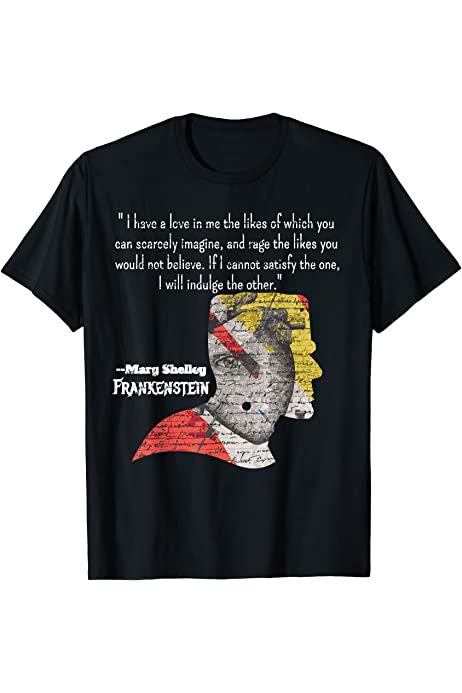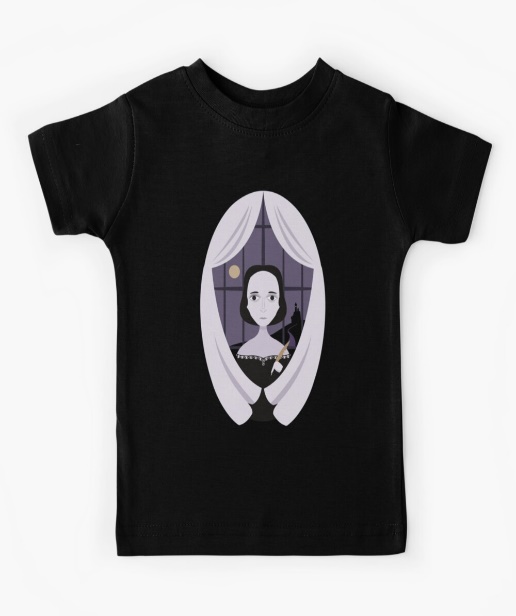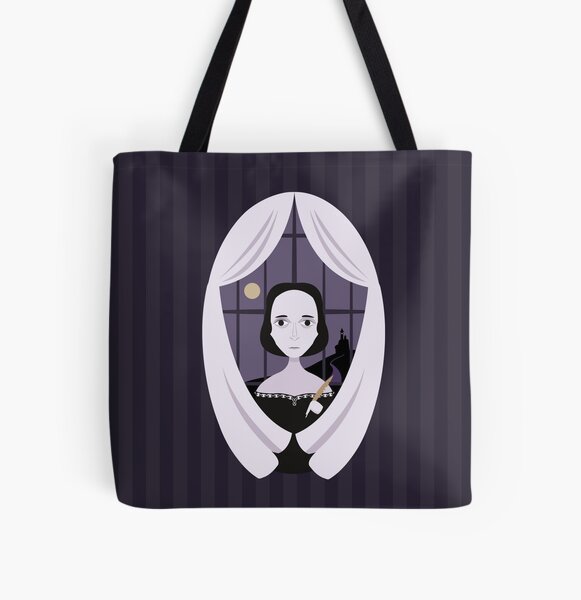Introduction
A brand-new and distinctive tourist destination, Mary Shelley’s House of Frankenstein honors the life and works of Mary Shelley, the author of the well-known book “Frankenstein.” Visitors are taken on a trip through Shelley’s unorthodox and tragic life and the enduring legacy of her invention through the immersive and multi-sensory experience. The attraction, housed in a Grade II listed building in Bath, has four eerie stories packed with odd items, unsettling music, distinctive smells, and special effects. Additionally, it features a terrifying horror walkthrough experience in the basement, popular culture rooms, a screening room, an escape room with a Frankenstein theme, and an 8-foot animatronic breathing creature.
Since its debut in July 2021, Mary Shelley’s House of Frankenstein has welcomed over 35,000 visitors, receiving excellent reviews and winning numerous tourism awards despite the operational difficulties the COVID-19 pandemic caused in the first year (Mishra et al., 2021). This paper aims to promote Mary Shelley’s House of Frankenstein as a tourist attraction by analyzing consumer behavior and providing strategic recommendations.
Description of the Problem
A new attraction, Mary Shelley’s House of Frankenstein, has encountered several difficulties in its first year of existence. The COVID-19 pandemic has significantly reduced the number of foreign visitors to Bath, which is the main problem (Loureiro, 2019). The performance of the attraction has been negatively damaged by the decline in tourism, which is not anticipated to rebound to pre-pandemic levels until 2024–2025. Economic anxiety brought on by the tourist slump has resulted in lower leisure spending and fewer guests than expected. This has led to the implementation of operational and marketing cost-saving techniques, further impacting the attraction’s capacity to draw people.
Mary Shelley’s House of Frankenstein must also contend with potential guests who must be aware of the attraction. Few people know that Mary Shelley authored “Frankenstein” while residing in Bath, despite Bath having over six million annual visitors. As a result, the attraction must make potential visitors aware of its existence and distinctive experience (Testa et al., 2020). The appeal also needs help drawing people who might not be into horror or science fiction themes. To fully immerse visitors in Mary Shelley’s life and her renowned creation, Frankenstein, the House of Frankenstein was created (Md Ali et al., 2019). The prospective consumer base for the attraction may be constrained by the fact that not all visitors will find this enticing. The interest also has to contend with operating in a cutthroat market.
Methodology
The purpose of the survey, which was undertaken as part of the strategy for promoting Mary Shelley’s House of Frankenstein, was to determine how likely it was for tourists to Bath to visit a Mary Shelley multi-sensory museum. Despite the lack of a concept, planning, or branding at the time, the poll attempted to determine the amount of interest and possible demand for the suggested attraction (Qazzafi, 2019). Bath, a well-known tourist attraction with over 6 million annual tourists, was the survey site (Xu et al., 2019). Visitors to the city made up the sample population for the study, and it was carried out using a standardized questionnaire that was distributed both in-person and online.
The survey was created to include questions geared toward a broad spectrum of tourists, including families, couples, and lone travelers. In addition to rating their interest in visiting a multi-sensory attraction devoted to Mary Shelley and her writing, respondents were also asked to offer feedback on the features and displays they might like to see there (Mason et al., 2020). Demographic information on visitors, such as age and gender, was also gathered through the survey.
The survey was delivered offline and online to reach as many people as possible. The in-person survey was conducted at well-liked tourist attractions such as museums and attractions in and around Bath. At the same time, the online poll was disseminated via social media, email, and other online platforms (Lasa-Álvarez, 2022). To construct and market Mary Shelley’s House of Frankenstein as a tourist destination, it was necessary to evaluate the survey findings to spot trends and patterns in visitors’ comments.
Data Analysis
To analyze the statistics for Mary Shelley’s House of Frankenstein, it was necessary to determine how many people visited it and how much money it made in its first year of operation. The first year of operation was challenging despite favorable evaluations and multiple tourism prizes (Muhamed et al., 2019). Due to the drop in foreign tourism following the COVID-19 epidemic and the uncertain economy, visitors spent less money on leisure activities than anticipated, which led to lower revenue.
To manage the financial impact, operational and marketing cost-saving methods had to be implemented. Despite the difficulties encountered, over 35,000 people have visited Mary Shelley’s House of Frankenstein since it opened on July 21, 2021 (Funk et al., 2022). However, the number of tourists was lower than anticipated due to the abovementioned issues.
Marketing techniques were implemented to advertise the attraction to local tourists and solve the appeal’s financial difficulties. To do this, regional companies and interests were partnered with to offer packages and promotions, and residents were targeted via social media platforms (Singh & Giacosa, 2019). The site also provided unique events and seasonal activities to draw more tourists. For instance, Mary Shelley’s House of Frankenstein provided a variety of eerie events and activities during Halloween to attract people interested in horror and the paranormal.
Strategic Recommendations
Digital Marketing Strategy
Mary Shelley’s House of Frankenstein might profit tremendously from a well-designed digital marketing campaign to reach a larger audience and attract more visitors. As a critical component of this plan, the website must be optimized for search engines, including creating exciting and engaging content. This would help the site become more visible and attract more natural traffic.
A younger audience can also be reached using social media platforms such as Facebook, Twitter, Instagram, and TikTok to distribute engaging material like behind-the-scenes museum tours and exclusive offers (Sama, 2019). Paying digital advertising, such as display ads and Google Ads, may also be used to target pertinent keywords and demographics. Finally, you may use email marketing to contact previous customers, invite them back, and offer special deals.
Local Partnership Strategy
Given the effects of COVID-19 on the tourism sector, Mary Shelley’s House of Frankenstein should establish strategic alliances with neighborhood companies and groups to increase the number of visitors to the museum. This can entail collaborating with neighborhood hotels and bed and breakfasts to offer special deals for visitors who stay in the region and visit the museum (Heikkurinen et al., 2019). To develop collaborative promotions and packages, including discounted admission to both sites, Mary Shelley’s House of Frankenstein could also form alliances with nearby tourist destinations and cultural institutions.
Special Event Strategy
A tourism destination can draw visitors and create buzz by holding special events. Mary Shelley’s House of Frankenstein might consider planning events with the museum’s theme, including author lectures or horror movie screenings and arranging special events around significant holidays like Halloween. In addition, there might be storytelling and writing workshops, costume contests, and even overnight stays for the most daring guests (Errichiello et al., 2019). Hosting such events would increase revenue and build a devoted fan base among horror and science fiction enthusiasts who would likely return for subsequent events.
Customer Experience Strategy
For Mary Shelley’s House of Frankenstein to increase tourist happiness and promote good word-of-mouth recommendations, the customer experience must be improved. The flow of visitors through the museum might be enhanced, exhibits might be maintained and labeled clearly, and tour guides might be exciting and educational. Additionally, providing tailored experiences like exclusive events or even guided tours could increase the museum’s exclusivity and draw in more visitors (Nowacki & Kruczek, 2021). To assist visitors in remembering their experience and possibly telling others about it, the museum might also think about selling goods and souvenirs related to the attraction’s subject, including t-shirts and replica props.
The Gift Shop Expansion
Expanding the gift shop is a recommendation to increase revenue and promote attraction. A well-stocked gift shop with attractive and unique merchandise can enhance the visitor experience, provide a lasting memory of the interest, and increase the likelihood of return visits. The inventory could include items related to Mary Shelley, Frankenstein, or horror, such as books, t-shirts, mugs, posters, and figurines. Additionally, offering exclusive or limited-edition merchandise can incentivize visitors to purchase items on the spot rather than waiting until later to buy them online. The gift shop should be prominently displayed and staffed with knowledgeable and friendly employees who can provide information about the attraction and answer visitor questions.
A Loyalty Program Implementation
Implementing a loyalty program is another recommendation to encourage repeat visits and foster a sense of community among visitors. The program could offer rewards for frequent visits, such as discounts on admission or merchandise, free tours or experiences, or exclusive access to special events. Visitors who sign up for the loyalty program could also receive regular email or social media communication, providing updates on the attractions, special promotions, and relevant news and events in the horror or literary communities. The loyalty program should be easy to sign up for and use, with clear instructions on redeeming rewards and earning points. By implementing a loyalty program, Mary Shelley’s House of Frankenstein can build a loyal customer base and increase visitor retention, revenue, and positive word-of-mouth marketing.
Conclusion
Mary Shelley’s House of Frankenstein is a distinctive and immersive tourist destination dedicated to the author of the popular novel “Frankenstein,” Mary Shelley. The COVID-19 pandemic, a lack of awareness among prospective visitors, a small customer base, and intense rivalry in the market were just a few of the obstacles the attraction had to overcome in its first year of operation. To overcome these obstacles, a survey was conducted to gauge interest in and future demand for the suggested attraction. Marketing plans were put into place to advertise the attraction to local tourists. Despite the difficulties encountered, the site has drawn over 35,000 people since its debut in July 2021, receiving favorable reviews and winning various tourism awards.
Strategic recommendations have been established to increase traffic and enhance overall performance. These include raising awareness among prospective customers, broadening the clientele, and hosting seasonal and special events. Mary Shelley’s House of Frankenstein has the potential to develop into a well-liked and prosperous tourist destination in the city of Bath with careful execution of these suggestions.
References
Errichiello, L., Micera, R., Atzeni, M., & Del Chiappa, G. (2019). Exploring the implications of wearable virtual reality technology for museum visitors’ experience: A cluster analysis. International Journal of Tourism Research, 21(5), 590-605. Web.
Funk, D. C., Alexandris, K., & McDonald, H. (2022). Sport consumer behaviour: Marketing strategies. Taylor & Francis.
Heikkurinen, P., Young, C. W., & Morgan, E. (2019). Business for sustainable change: Extending eco-efficiency and eco-sufficiency strategies to consumers. Journal of Cleaner Production, 218, 656-664. Web.
Lasa-Álvarez, B. (2022). Comparing and Contrasting Adaptations of Classic Texts for Young Readers: Mary Shelley’s Frankenstein, or the Modern Prometheus (1818). In Concepts, Discourses, and Translations (pp. 279-298). Cham: Springer International Publishing.
Loureiro, S. M. C. (2019). Exploring the role of atmospheric cues and authentic pride on perceived authenticity assessment of museum visitors. International Journal of Tourism Research, 21(4), 413-426. Web.
Mason, A., Narcum, J., & Mason, K. (2020). Changes in consumer decision-making resulting from the COVID-19 pandemic. Journal of Customer Behaviour, 19(4), 299-321. Web.
Md Ali, Z., Zawawi, R., Myeda, N. E., & Mohamad, N. (2019). Adaptive reuse of historical buildings: Service quality measurement of Kuala Lumpur museums. International Journal of Building Pathology and Adaptation, 37(1), 54-68. Web.
Mishra, R., Singh, R. K., & Koles, B. (2021). Consumer decision‐making in Omnichannel retailing: Literature review and future research agenda. International Journal of Consumer Studies, 45(2), 147-174. Web.
Muhamed, A. A., Ab Rahman, M. N., Mohd Hamzah, F., Che Mohd Zain, C. R., & Zailani, S. (2019). The impact of consumption value on consumer behaviour: A case study of halal-certified food supplies. British Food Journal, 121(11), 2951-2966. Web.
Nowacki, M., & Kruczek, Z. (2021). Experience marketing at Polish museums and visitor attractions: The co-creation of visitor experiences, emotions and satisfaction. Museum Management and Curatorship, 36(1), 62-81. Web.
Qazzafi, S. H. E. I. K. H. (2019). Consumer buying decision process toward products. International Journal of Scientific Research and Engineering Development, 2(5), 130-134. Web.
Sama, R. (2019). Impact of media advertisements on consumer behaviour. Journal of Creative Communications, 14(1), 54-68. Web.
Singh, P., & Giacosa, E. (2019). Cognitive biases of consumers as barriers in the transition towards circular economy. Management decision, 57(4), 921-936. Web.
Testa, F., Iovino, R., & Iraldo, F. (2020). The circular economy and consumer behaviour: The mediating role of information seeking in buying circular packaging. Business Strategy and the Environment, 29(8), 3435-3448. Web.
Xu, Z., Zhang, H., Zhang, C., Xu, M., & Dong, N. (2019). Exploring the role of emotion in the relationship between museum image and tourists’ behavioral intention: The case of three museums in Xi’an. Sustainability, 11(3), 559. Web.
Appendix
Proposed Inventory for the Museum’s Gift Shop



